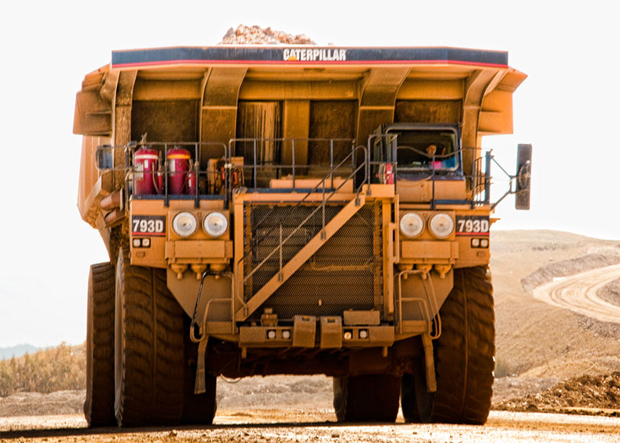Robotic mining worth its high cost: Rio

Mining giant Rio Tinto has concluded that the benefits of introducing automated aids on Australian mining sites, including remote-controlled trucks, diggers, extractors, loaders and shippers, would far outweigh the sky-high cost of purchase, testing and installation. Rio Tinto added that the new equipment would bring improvements in staff turnover, workforce health and safety, and lower the environmental impact of work sites.

Massive trucks like these may become a
thing of the past.
(A big, big, big truck! image by
Kristal Kraft, CC BY-SA 2.0)
A Rio Tinto-commissioned report (PDF) by BAEconomics into mining automation released yesterday found that the automation of mine operations would ensure the ongoing safety of workers in sites where death by misadventure is not uncommon.
"The introduction of remotely controlled and autonomous technologies ... represents a major advance in terms of its potential to significantly reduce the risks to humans of working in a hazardous environment. Automation will minimise the number of human operators that will need to be located on site or in close proximity to operations.
"In the absence of automation, these risks will increase in future as mines expand on the surface and deeper underground. The need to access ore deposits in deeper and increasingly complex environments heightens safety risks, and accounts for the heavy emphasis on automation in modern mines being commissioned today," the report said.
Automated operations would use remote command centres, like Rio Tinto's existing mining operations centre based in Sydney. The report said that with increased automation, more jobs would be created in population-friendly sites, like capital cities, while attracting more women to the industry.
"The need to attract new employees, including women, in an environment where skilled labour is in short supply will therefore further reinforce the trend toward automation, which places workers in a safe environment close to their communities," the report read.
The report added that a shift towards remote equipment would also bring a drastic shift in the type of worker that a company like Rio Tinto would attract and ultimately hire.
Automating mine sites would also lower a resource company's bottom line by eliminating inefficiencies while opening up new sites that, without automation, may have been otherwise inaccessible.
Remote-controlled and automated equipment operates in a more predictable, controlled and precise manner. This eliminates a range of inefficiencies, for instance:
- Unnecessary wear and tear or fuel consumption on the part of equipment such as automated trucks and LHDs [load-haul dump vehicles], which operate at efficient speeds, or for automated trains, which brake in a controlled manner
- The need to repeat tasks such as re-drilling blast holes that do not meet specifications
- Unnecessary movements to place equipment in precisely the right position, for instance in the manual operation of ship loaders
- A reduction in the use of energy and consumables, for instance, because automated processes measure and adjust input requirements in real time.
Other benefits would include more regular maintenance periods to ensure equipment doesn't suffer "catastrophic failure"; more precise blast holes created first time around, meaning less explosives used in the long run; and the advantage of new, real-time machine data that lets an operation adjust a process on the fly to ensure time and resources are being spent efficiently.
Despite the obvious benefits of robotic automation, the report also highlighted the risks of such initiatives due to the industry's complexity.
"Installing remotely controlled and autonomous equipment in mines is also complicated because of the unique character of each mine operation. These systems are highly customised. Requirements vary by type of mine, and considerable testing and investment in equipment such as control rooms and mobile assets, but also in ancillary services such as sensing and communications technologies, as well as signal processing and computing power must be undertaken."
The report cited the risk of a remote operator becoming overloaded with tasks presented to them by an automated mining machine.
"It is also the case that automating previously manually controlled systems creates some specific risks arising from 'human factor'," it said. "They include circumstances where there is an over-reliance on automation, when monitoring errors occur, when warning systems are ignored or turned off, or when complex systems cause operators to be overloaded." These issues have been well studied in aviation, transport and other industries where automation is common.
Rio Tinto has invested several hundred million dollars in automated projects to date, with the most recent being its automated ship loader stationed in the Pilbara region.